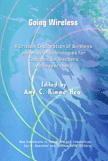Introduction
While reading this book, I was forced to consider my own computing environment. I own a desktop as well as a laptop; the desktop lives at home, and the laptop comes with me when I go to work. As such, I think of the desktop primarily as my entertainment computer, and the laptop as my work computer. Yet these roles are not so stable. For example, because Dreamweaver is installed on my desktop and not my laptop, I am authoring this webtext on it. In fact, Dreamweaver is installed on this computer instead of the other one because I had originally intended this computer to be primarily a work machine. There are a number of reasons that this switch in roles took place: because this machine has more RAM, and because it is hooked up to a wired connection, it is better for streaming movies, downloading music, and running my level 80 priestess through the Icecrown Citadel. Further, because a change in scenery can do wonders for writer's block, I have come to think of my laptop in terms of work-related affordances.
When I say I have "come to think of," I choose my words carefully. It would probably be disingenuous to say that these contexts in which I think of the functions of my two computers necessarily hold true to my actual patterns of use. How many times, I wonder, have I written papers or portions of papers on this machine? Written emails to students or professors? Graded papers? Worked on my course web site? How many times have I emailed friends, read my Google reader feed, or watched YouTube videos from the office on my laptop? What these questions signal is that the world of ambient connectivity has blurred the boundary between our contexts for work and play. After all, even though wireless technologies might bring with them the expectation to be always on, they also bring with them the agency to decide when and where to be on.
I choose to begin with an exploration of my own personal computing habits and how that is effected by technological affordances because that is largely what Going Wireless is all about. In the introduction, Hea tells us the following:
This collection seeks to serve as a resource for theoretical explorations on wireless and mobile technology use as it relates to computer and composition teaching and research and to act as a reference for the members of the rhetoric and composition community charged with the responsibilities of integrating, supervising, and evaluating wireless and mobile technologies. (p. 3)
As both a resource for theoretic explorations and as a reference, the book does indeed reach its goals. The various authors ask us to consider networked computers from the perspectives of students, teachers, and university administrators. They ask us to consider the in-real-life (IRL) contexts in which these actors interact with their machines, in local to global perspectives, and they ask us to consider what all of this means for writing instruction in the increasingly networked university.
The book's 330 pages are organized thematically into five sections, each providing a different context in which to consider the intersection of wireless technologies and composition. The scope is wide-ranging, and impressively, the result is not an exploration that is long on breadth but short on depth. Like all good edited collections, Going Wireless presents a wide range of perspectives and contexts without sacrificing the depth we expect in theoretical explorations. What emerges is the imperative to question and interrogate the wireless worlds into which we are all expected—and increasingly expecting our students—to write.
There is a tension running throughout the book, however, dealing with the affordances of wireless technology, both good and bad, and like many other edited collections, there is some overlap and some contradiction, some conversation and some cross-talk—all of which is a good thing.
